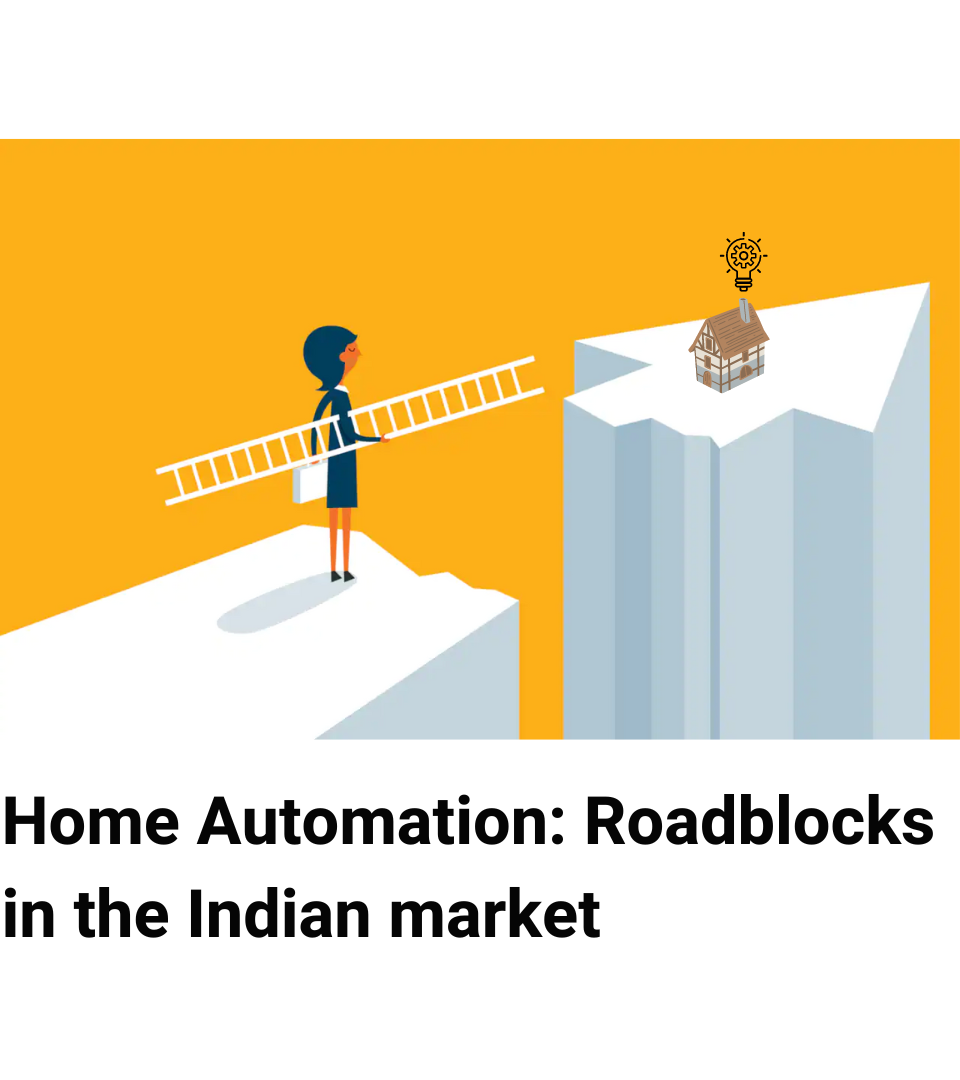Ajith Nair- February 23, 2023 / Updated- February 23, 2023
The future is bright for smart homes in India. A report put forward by Allied Market Research expects the Indian home automation market to reach $13,574.1 million in size–by 2026. That is nearly a 30% increase in annual growth rate from its previous accounts.
However, India is yet to witness the kind of “boom” that home automation systems have brought about in other countries. While the transition to smart homes is indeed picking up pace, the general consumer still holds some misconceptions. And here are 5 reasons why it’s not as widespread as it should be:
“It’s probably not affordable”
Majority of the people believe home automation to be reserved for the elite, rich class among us. This would’ve been true 10 years ago.
A smart home today is being designed to be more accessible–before anything else. While one may still find smart devices that fall a bit heavy on the purse, a smart home can get up and running for much lesser than that.
Consider retrofits like smart plugs. Users can get quality smart plugs in a 600-3000 ₹ price range in India. Get an extension, plug your devices into a smart plug, and your house becomes smarter than it ever was. (If you’re looking for ways to use your smart plug, try giving this a read).
“I’m not sure what this is”
Smart home and its IoT technologies aren’t exactly “common lingo”. People aren’t generally familiar with some of the terms that companies seem to casually throw around.
But here’s the thing. You may be totally unaware of modern technology and its terminology–yet you can find your way around a smart home fairly easily. That is because smart devices are primarily designed to take the load off you and be user-friendly. A home automation system that makes your brain hurt–kind of beats the purpose.
“It probably involves a lot of structural changes”
A smart home is fundamentally different from a traditional home. So, making that jump will involve serious new modifications, right? No. In fact, one of the biggest selling points of home automation industries today–is how incredibly easy it can be to set up a smart home.
It is now fairly common for users to make their old/existing homes smart, instead of investing in a new one. And with retrofit technologies and wireless solutions in line, one can now switch to smart in 5 mins–with no additional civil, structural, or electrical modifications in the picture.
If you’ve got a manual in hand, you may very well do it yourself.
“It’s not in the stores!”
The amount of trust an average Indian user places in online shopping–still has a roof. Being able to actually view the product and getting hands-on experience are two very important factors in a user’s journey.
This is fairly rare in the Indian home automation industry. Most of the automation devices in India are sold online or via service providers. The average electronic store doesn’t keep stock of these devices. So when we have users who aren’t “big” on smart devices to begin with, not being able to physically try out the devices pushes them further away.
This is why it’s important for companies to maintain fully functional experience centers under their wings. Users can visit per convenience and get to use these products before making a decision.
If you are looking for a home automation company, we’d advise you to go with those that provide this facility.
“Can’t trust these new companies and the internet”
Here’s a perspective. Users were and still are skeptical about Google Pay UPI–almost a decade after its launch here. While certainly not in the majority, there are users who’d think twice before transferring their finances online. And today if users think thrice before transferring their entire house online–you can imagine why.
Also, there has been no shortage of sub-par, white-labeled products in the market to worsen the case. Users get offered smart devices at unrealistically low prices, are not given warranties, and are stuck with low-quality products that do more harm than good.
Be as it may, it is only a matter of time before smart homes become a norm. With an estimation of over 40 million smart homes in India by 2025, the growth is certainly exponential.
But this process will not be a breeze. Home automation companies must constantly do their part to bridge the gap between users and modern technologies. Smart devices and every bit of information around them–need to be made more and more accessible to the general user.
Making people aware of a smart home and its magic will be key.



Leave a Reply
Want to join the discussion?Feel free to contribute!